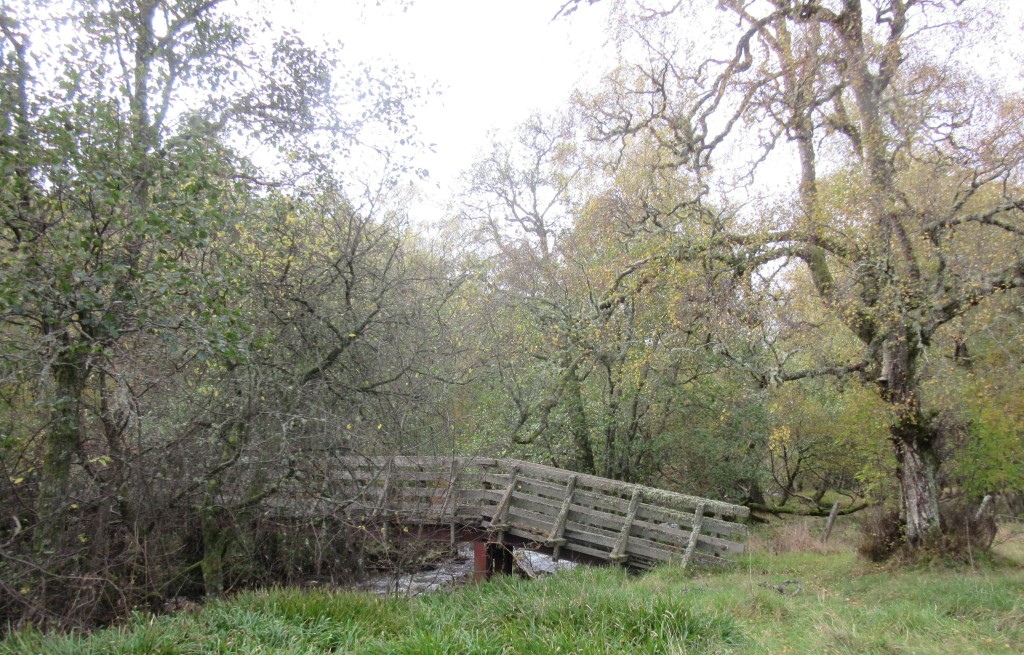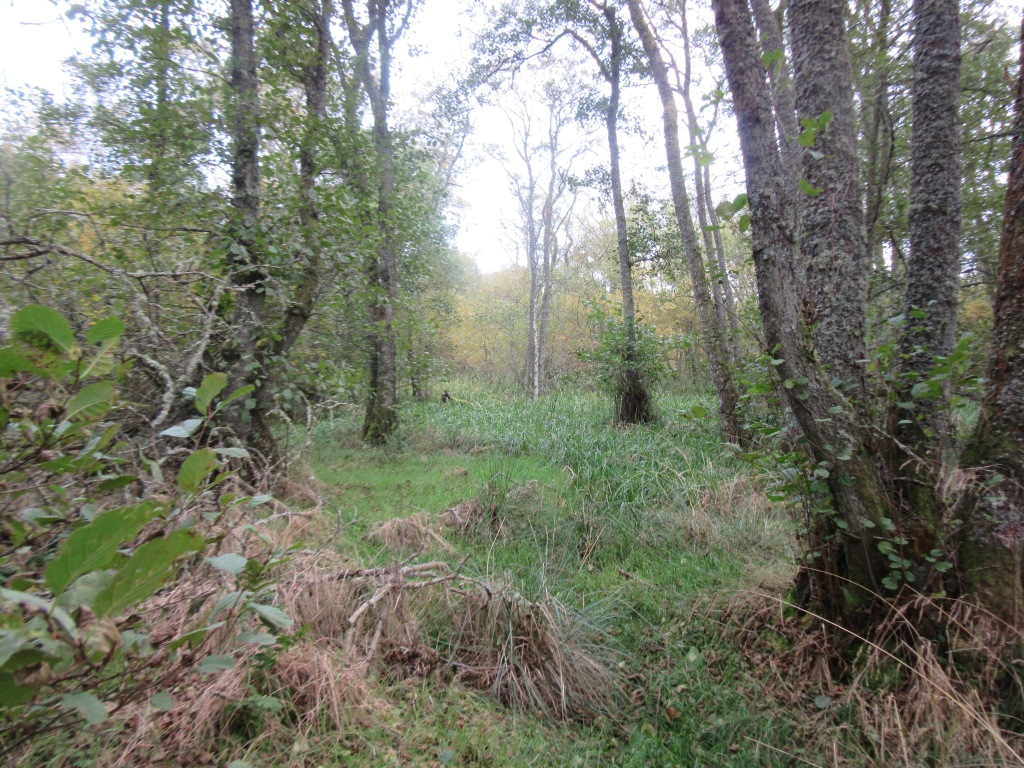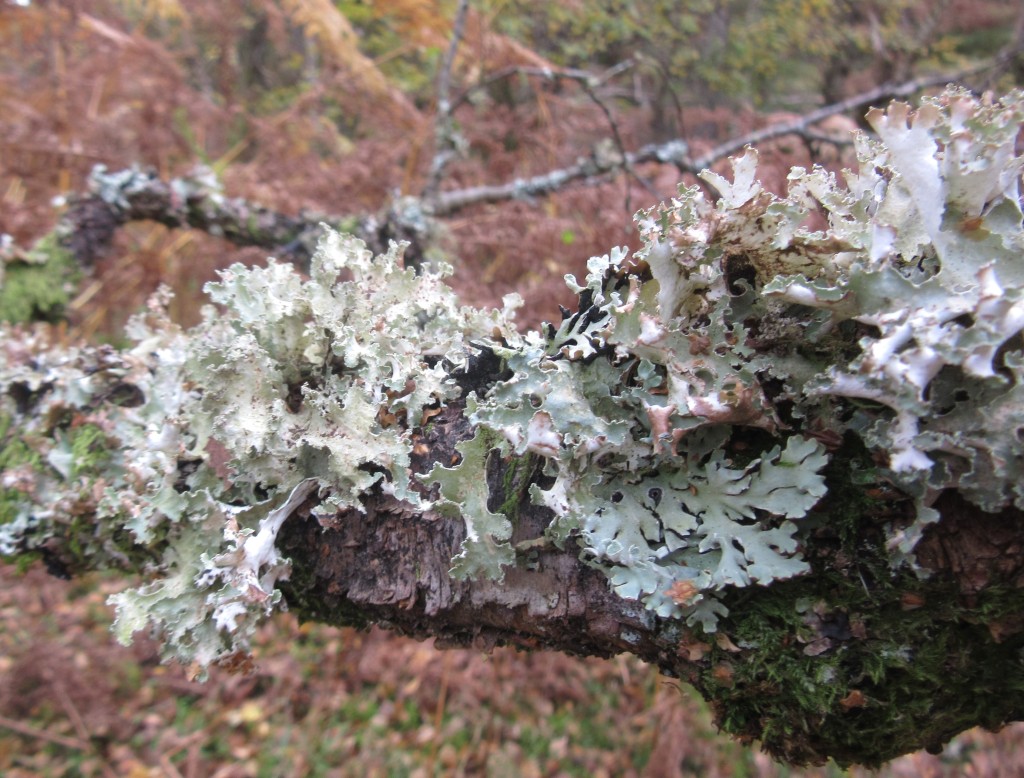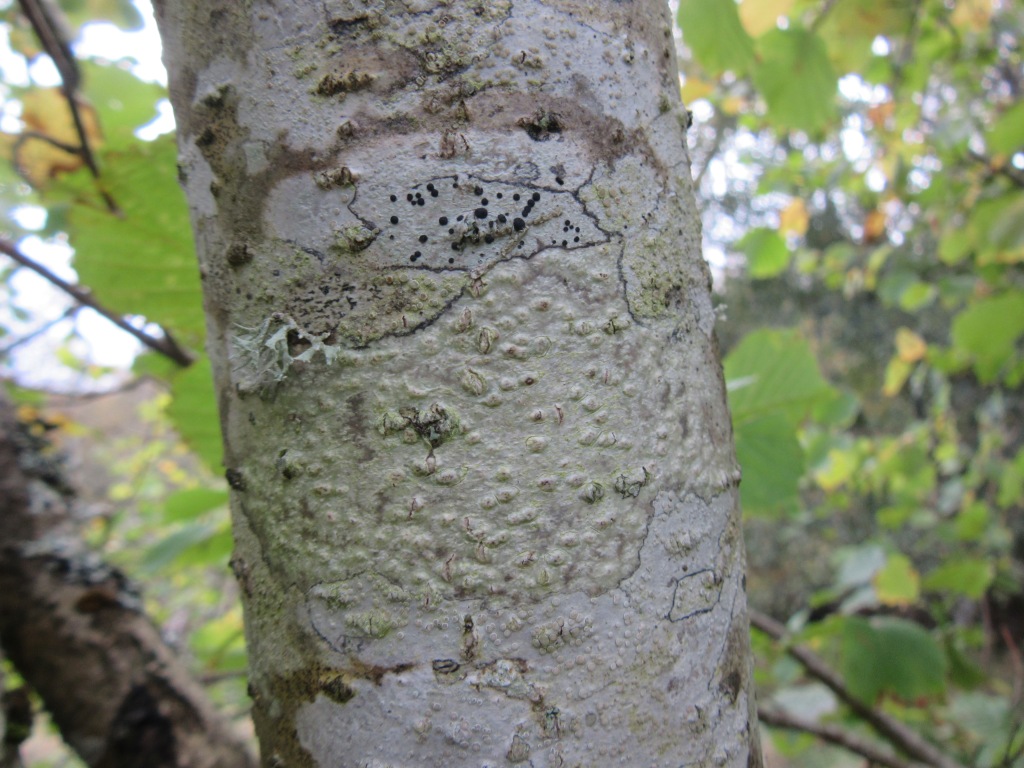
There is an irony in planning to look at lichens in the riparian woodlands around some of the lowland lochs in Angus and then being caught off guard by the exceptional flooding in these areas that make these very woodlands inaccessible for the time being. The same rain that breathes life into these woods now is so excessive that those woods have become no more than a fringe of tree crowns in a sea of agitated water, in turn indicating normal water levels of lochs and rivers. The images of roads undermined by flood water around Marykirk and the streets of Brechin covered in a thick layer of mud after the water levels subsided, not only presses home the importance of riparian woodlands across the entire watershed, it also urged me to reflect on the role of lichens in these riverwoods.

Originally, I had intended to look at alder and willow as two of the most important constituent trees in riparian woodland, as I wondered whether the smooth and thin, acidic bark of alder would attract different lichen species than the corky, thick and nutrient-rich bark of willow. Surely, if lichens absorb water across their entire thallus and if that water runs off from branches and trunks, then that water will carry some of the properties of the bark of the tree species. I had assumed that this would mean alder and willow would host different lichen species, but an afternoon ramble through the alder woods at Loch of Park SSSI suggested the opposite. I found Peltigera species that can double or triple their dry weight when it rains, crustose species on twigs whose areolate crusts become continuous in humid conditions, and Bryoria and Usnea species whose thalli are water repellent to avoid becoming dislodged from the tree in rain under the sheer weight of water they would otherwise absorb. Both tree species, however, were host to a more or less similar range of species.

A few days after the worst flooding in Angus, I visited the riverwoods along the river Feugh near Finzean that are managed by Birse Community Trust. Though not in the worst affected area and further upstream, the wooded banks along this river were surprisingly accessible. Though there was birch, alder, willow, ash and hazel, I found only limited differences between the lichen floras on these tree species. Foliose species like Parmelia sulcata, Melanelixia glabratula, Platismatia glauca, Hypogymnia physodes and Evernia prunastri dominated, with the fruticose beard lichen Usnea subfloridana mixed in for good measure. The bare crowns of some of the trees and shrubs were entirely covered in lichen foliage. These lichens absorb water from rain and runoff, preventing this water from reaching the ground. Such lichen foliage thus slows down the runoff of rain and fertile topsoil downstream. Whereas many dehydrated lichens are able to become water saturated in a matter of seconds, the release of that water through evaporation tends to take place over a matter of hours or days. In doing so, this release of humidity to the air will keep the riparian woodland damp, thereby maintaining riverwood conditions. Researchers speak about this phenomenon in terms of water partitioning, with the lichens decreasing throughfall and stemflow by increasing interception loss.
Anyone who has been for a walk after heavy rain will have noticed the many tufts of foliose lichens like Evernia prunastri, and Ramalina farinacea, or even Ramalina fraxinea that, water saturated, were dislodged by the impact of rain. Once on the ground, however, these lichens are not mere biomass and water, but also an important source of nutrients. Cyanolichens, those that are formed through a symbiosis between a fungus and cyanobacterium species, are able to fix nitrogen from the air. These lichens tend to be more common in the temperate rainforests in the west of Scotland. In contrast, in the east of Scotland most lichens have a species of green alga as photobiont, and are only able to absorb the nutrients they need from water that runs across their thallus. Those lichens that were dislodged and are now at our feet will release those nutrients slowly, so that they become available for surrounding plants. Had rain water not been intercepted by lichens, but directly run off into the river, these nutrients would have been lost to the riverwood ecosystem.

There have only been few days between the warnings for heavy rain this October and my plans to look at lichens in the riparian woodlands surrounding Balgavies Loch, and Loch of Kinnordy and Loch of Lintrathen have been put on hold for a little longer. I know the lichens around these lochs will play their role in ameliorating the impact of the deluge we’ve been experiencing, and more widespread establishment of riverwoods further upstream in Angus Glens would play an even more significant role. With climate change, these downpours will only become more intense and frequent. Our response to it, through establishing riverwoods, will not only slow down the runoff of rainwater downstream and keep some of the nutrients in the riparian ecosystem, but it would also create new opportunities for lichens of both upland and lowland habitats. Perhaps, after seeing the images of roads undermined by rivers and mud-covered streets, that is a more hopeful picture to hold on to.
Copyright text and images Petra Vergunst
Living near Brechin and the terrible flooding it experience I am very worried about the reaction from residents who do not understand the importance of riparian woodlands. I hear people calling for rivers to be dreaged and trees to be removed. Many think that straightening, deepening and clearing the rivers will allow the water to flow away from the area faster and stop future flooding. There is anger towards the council and sepa. It is hard to try to open dialogue about the importance of the natural habitat when emotions are so raw.
With climate change protecting and establishing new riverwoods are more important than ever.
LikeLike
Hello Clare,
I fully appreciate how raw feelings may be and how the area is continuing to be at risk of floods. In Deeside the River Dee Trust is doing very good work on restoring riparian woodland (see https://riverdee.org.uk/news/woodland-restoration-project-makes-progress-with-over-100000-trees-planted/). Though dredging and straightening rivers may seem an attractive solution, it will just move the problem of flooding further downstream. I think that reforesting riverbanks further up the river Esk will need to be part of a larger series of measures to improve flood protection/
All the best,
Petra
LikeLike
Thanks Petra, I totally agree. There are pockets of planting and remeandering work going on in some of the Angus glens. Hopefully we will see more positive feelings and better understanding of these projects.
LikeLike